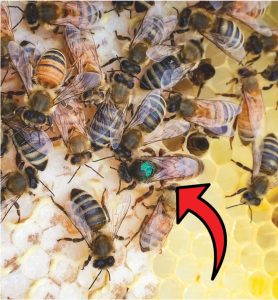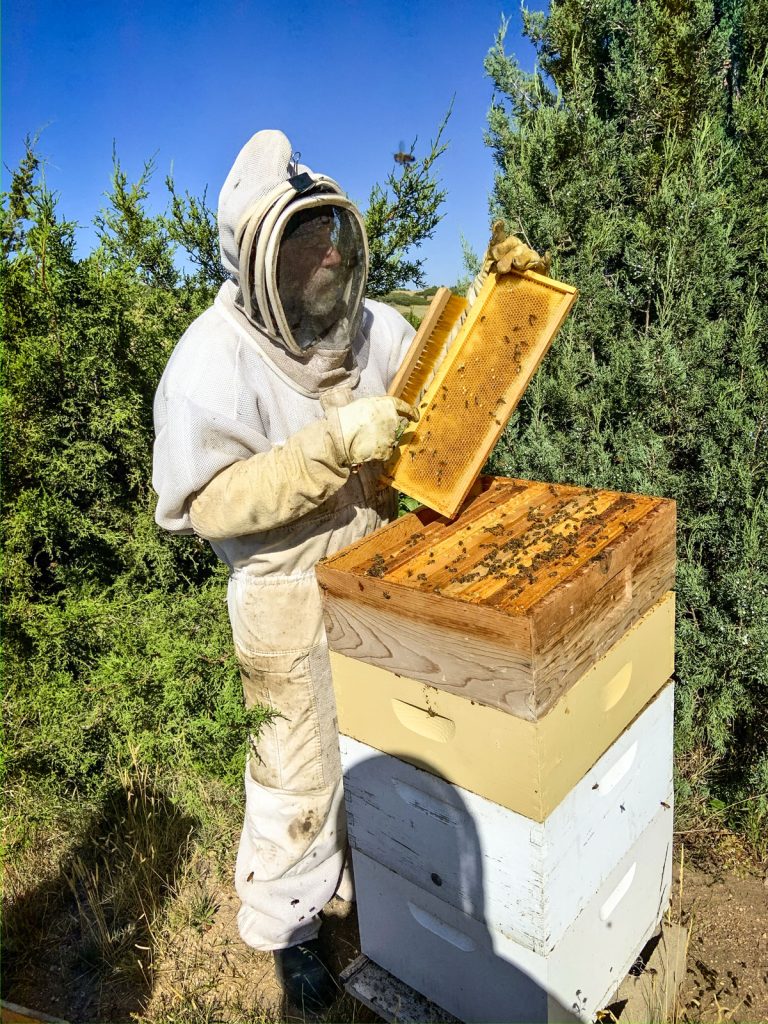National Honey Month: how sweet it is

The queen bee in this beehive in Castle Rock had a green dot to identify her and keep track of her age.
September is National Honey Month, so celebrate by honoring all things honey, which begins with appreciating the hard-working honeybee. The average honeybee will make only one-twelfth of a teaspoon of honey in its lifetime, so it takes hundreds of bees traveling many miles to make a single jar.
It is a long journey to get honey from beehives to our homes. Bees forage for nectar, visiting 50-100 flowers to collect the nectar they will bring back to the beehive. Over time, the nectar binds with enzymes and wax thus giving honey its characteristic sweet flavor. When the honey is ready, the bees will add a layer of wax over the honeycomb cells, sealing them.
Beehives are fascinating in many ways. A honeybee hive usually has between 20,000 and 80,000 bees living together in a colony. A colony is made up of one queen bee and several hundred male drones, with female worker bees making up the balance. The hexagonal shape of the honeycomb is the most efficient shape to maximize space and allow the cells to hold a tremendous amount of weight.
Bees heat and cool their own hive to keep the temperature between 93 and 95 degrees year-round. Using their wings, the bees fan collected water so it evaporates into the air. They then fan the cool air so that it circulates around the hive as sort of a central air conditioning. In cool weather, the bees swarm together to generate body heat.
Dating back to ancient times, honey has been used throughout the world for medicinal purposes. The antibacterial qualities of honey have been found to soothe throat irritation, calm coughs and even help heal canker sores as well as relieve dry skin and lips.
Sandy Aragon, a beekeeper in Castle Rock for more than 20 years, said, “It’s about more than the honey.” Bees play a vital role in all agriculture; without bees, we would not have food. She encouraged planting a range of flowers and trees for the bees to have access to nectar.
Aragon suggested looking for raw honey instead of pasteurized honey, stating that raw honey is the least processed and has many enzymes, antioxidants and vitamins that are lost in the pasteurization process. Avoid giving honey to children under 12 months old.
The National Honey Board has many recipes on its website, www.honey.com. Ideas include adding honey to punch, pecorino cheese, mustard, popcorn, nuts, figs, chicken wings and ice cream, to name a few.

Rodney Taldmage, who has been a beekeeper for more than 40 years, checks on the queen bee in a beehive colony in Castle Rock.
By Lisa Nicklanovich; photos courtesy of Sandy Aragon